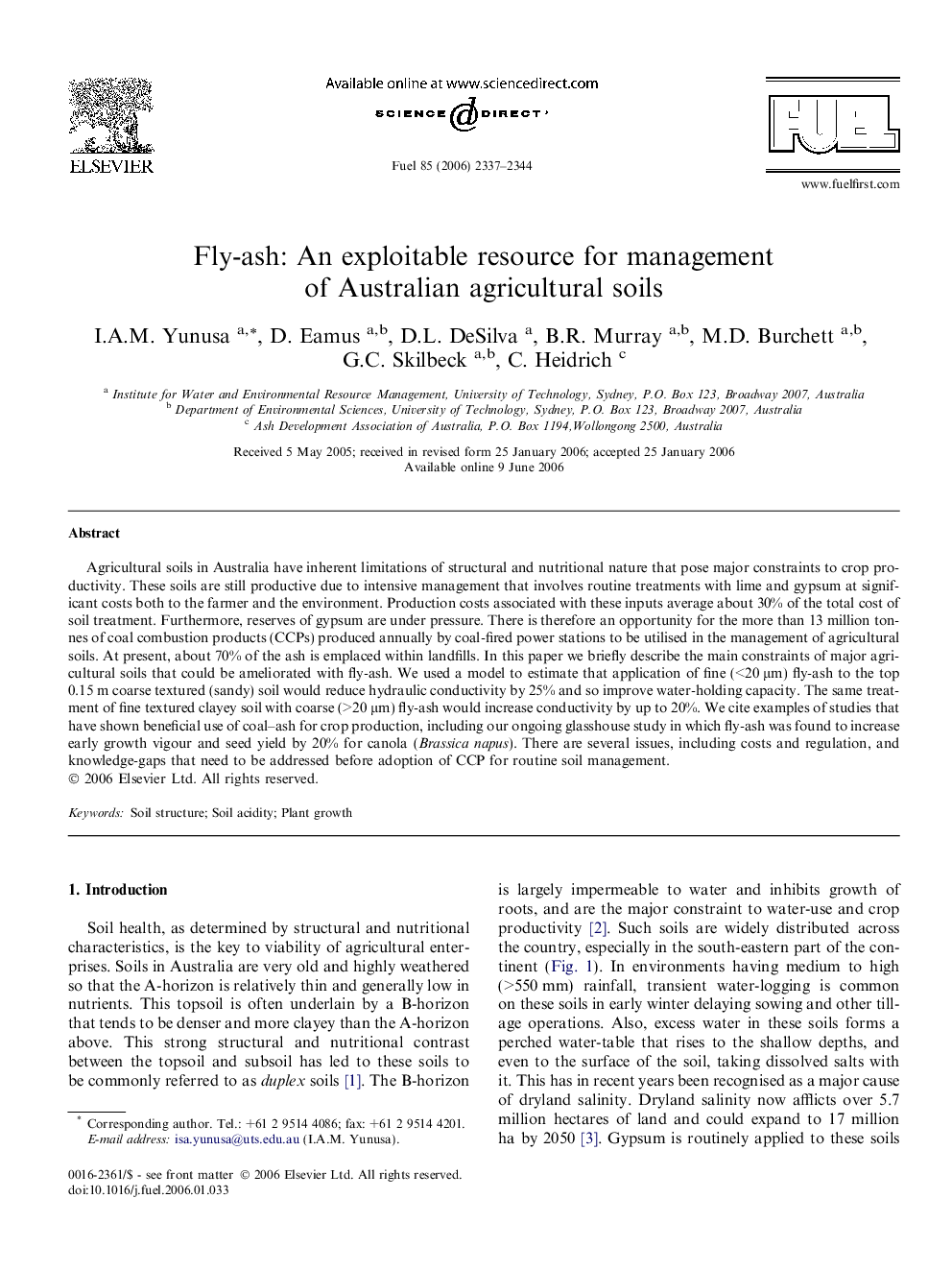| Article ID | Journal | Published Year | Pages | File Type |
|---|---|---|---|---|
| 208462 | Fuel | 2006 | 8 Pages |
Agricultural soils in Australia have inherent limitations of structural and nutritional nature that pose major constraints to crop productivity. These soils are still productive due to intensive management that involves routine treatments with lime and gypsum at significant costs both to the farmer and the environment. Production costs associated with these inputs average about 30% of the total cost of soil treatment. Furthermore, reserves of gypsum are under pressure. There is therefore an opportunity for the more than 13 million tonnes of coal combustion products (CCPs) produced annually by coal-fired power stations to be utilised in the management of agricultural soils. At present, about 70% of the ash is emplaced within landfills. In this paper we briefly describe the main constraints of major agricultural soils that could be ameliorated with fly-ash. We used a model to estimate that application of fine (<20 μm) fly-ash to the top 0.15 m coarse textured (sandy) soil would reduce hydraulic conductivity by 25% and so improve water-holding capacity. The same treatment of fine textured clayey soil with coarse (>20 μm) fly-ash would increase conductivity by up to 20%. We cite examples of studies that have shown beneficial use of coal–ash for crop production, including our ongoing glasshouse study in which fly-ash was found to increase early growth vigour and seed yield by 20% for canola (Brassica napus). There are several issues, including costs and regulation, and knowledge-gaps that need to be addressed before adoption of CCP for routine soil management.
